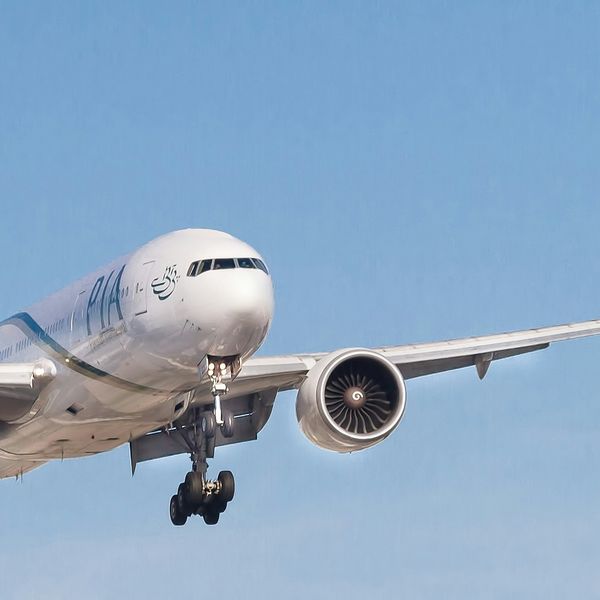News Desk
The News Desk provides timely and factual coverage of national and international events, with an emphasis on accuracy and clarity.

Apple iPhone 16 smartphones are displayed at a store in London, Britain, October 6, 2024.
Reuters
iPhone 16 pre-orders down 12% from last year, suggesting weaker demand
Standard iPhone 16 models gaining popularity over Pro versions, potentially impacting revenue
Consumers upgrading phones less frequently, prompting Apple to rethink release strategy
The launch of Apple's highly anticipated iPhone 16 lineup, featuring advanced Apple Intelligence capabilities, enhanced hardware, and a long-awaited design refresh, has generated significant excitement among tech enthusiasts. However, early indications suggest that demand for these new models among the general public may be falling short of expectations.
For tech gadgets, demand is often measured in terms of lead times — in other words, how long it takes for your order to arrive once you click that “buy” button. A recent analysis carried out by investment bank Morgan Stanley and published by AppleInsider estimates that the iPhone 16's lead time is the briefest observed for any iPhone model in half a decade, comparable to that of the iPhone 12.
Initial estimates for iPhone 16 pre-orders suggest a potential cooling in demand compared to previous launches. According to industry analyst Ming-Chi Kuo, approximately 37 million units were reserved in the first weekend - a 12% decrease from the previous year's figures. Notably, the higher-end Pro models experienced a more significant decline in interest.
Other market watchers provided similar assessments. According to CNN, Wedbush's Dan Ives estimated slightly higher pre-order numbers at around 40 million units, while CFRA Research's Angelo Zino also noted a year-over-year decrease in initial sales data.
Beyond raw sales figures, the distribution of demand across the iPhone 16 lineup may be a concern for Apple. The standard and Plus models, which now offer features comparable to the Pro versions, appear to be attracting more buyers. This shift could impact the average selling price and overall revenue from iPhone sales.
Kuo's analysis indicates that sales of the premium models dropped significantly - the Pro by 27% and the Pro Max by 16% compared to their predecessors. In contrast, the base iPhone 16 and 16 Plus models saw a slight uptick in sales relative to the iPhone 15 series.
This changing sales pattern across the product range could have implications for Apple's revenue strategy and profit margins in the coming quarters.
Vanishing launch-day queues
Long gone are the days when devoted Apple customers would eagerly queue up for days to purchase the latest iPhone. Apple has faced pressure for the iPhone 16 to perform well commercially, following a period of stagnant sales for their smartphone line.
The company has had trouble providing consumers a compelling incentive to upgrade since introducing 5G capability in the iPhone 12 model. Apple's strategy hinged on the appeal of new AI-integrated software features, hoping these would reignite consumer interest and boost sales figures.
Despite the iPhone 16's array of advanced capabilities, these enhancements may not sufficiently entice new buyers. AppleInsider highlighted that consumers are primarily considering upgrades due to the age of their current devices, rather than being drawn by cutting-edge features such as Apple's AI innovations.
Experts estimate that consumer behavior with regards to upgrading phones may be changing for good, with fewer and fewer opting for yearly upgrades. An important factor driving this change is the fact that modern smartphones have simply become too good to replace after a year or even a couple of years. In response to this shifting landscape, Apple appears to be gradually moving away from its traditional annual product upgrade cycle.
This strategic shift could result in more frequent, incremental releases throughout the year, potentially reducing the impact of long delays between major updates and better aligning with evolving consumer expectations.
Potential holiday season rebound
It's important to note that these delivery estimates don't provide a complete picture of market dynamics. The turnaround time is intrinsically linked to Apple's inventory levels, information which the company is notoriously secretive about. These expedited delivery times could potentially be interpreted as Apple's successful alignment of production with consumer demand, rather than necessarily indicating a lack of market enthusiasm.
The iPhone 16 is still in its early stages of market presence, with in-store availability beginning September 20. Apple's policy of withholding sales figures until their earnings report means concrete data won't be available until next month. Even then, the information will only encompass a brief period - seven days of pre-orders and ten days of regular sales. Despite initial sluggishness, many industry experts remain optimistic about the iPhone 16's performance in the coming months.
Speaking to CNN, Ives expressed confidence that the iPhone 16 is poised for significant success. He characterized the upcoming holiday season as very important for the new model, possibly marking the beginning of a new "supercycle" in iPhone sales.







Comments
See what people are discussing